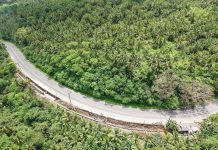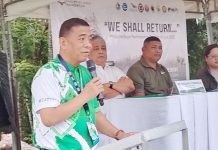PALO, Leyte-The Philippine Coconut Authority (PCA) in Eastern Visayas continues to watch major ports in the region to prevent the entry of planting materials with coconut scale insect or “cocolisap”.
PCA Regional Manager Joel Pilapil said the entire region is still free of the very damaging “cocolisap” infestation, prompting them to step up all efforts to prevent the bugs from entering the coconut-producing provinces.
Pilapil said they have been coordinating with the quarantine office based in ports of Northern Samar and Southern Leyte provinces to ensure that coconut planting materials are free from pests and diseases
“It can kill a mature coconut tree. It’s a real headache on how to address this concern. We don’t want this to happen in the region,” Pilapil told the Philippine News Agency (PNA) on Thursday.
‘Cocolisap’ has affected several areas in the country such as Batangas, Quezon province, Basilan, and Zamboanga, but it is being contained as scientists found antidotes to these bugs, said Pilapil.
The pest infestation starts with yellowing of the lowermost leaves, followed by drying of all leaves and ultimately the death of the palm.
To date, the only major threat to the region’s coconut industry is the coconut rhinoceros beetle manifesting in areas with rotten coconut trees as their breeding ground, Pilapil said.
“Although we have many rotten coconut trees damaged by super typhoon Yolanda, the population of rhinoceros beetle has not reached the alarming level due to massive debris clearing activities since 2014,” Pilapil added.
The PCA reported that 33.90 million coconut trees in Eastern Visayas were affected by the monster storm in 2013.
Of the total, 13.90 million were categorized as totally damaged, 9.04 million severely damaged, 5.69 million slightly damaged, and 5.28 million moderately damaged.
Eastern Visayas — the second top coconut producing region in the country — has 46.9 million bearing trees. About 72 percent were destroyed by the disaster.
Millions of planting materials have been distributed to replace uprooted and sheared trees.
(SARWELL Q. MENIANO/PNA)



